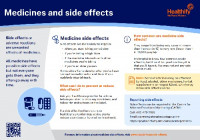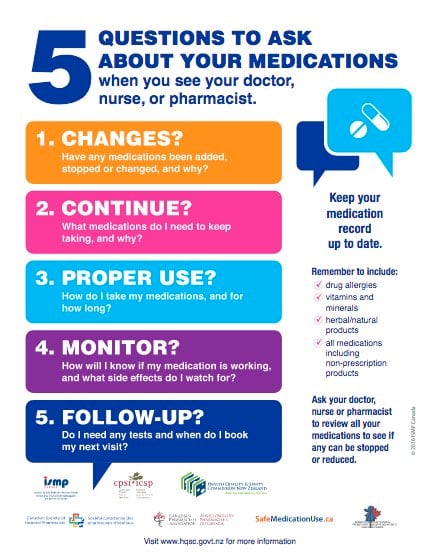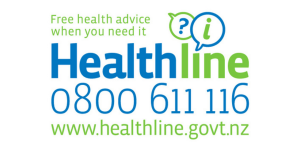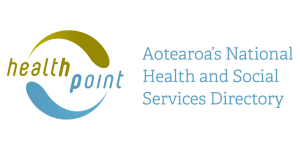Paracetamol and codeine
Key points about paracetamol + codeine
- Paracetamol + codeine (combined) is used for pain relief in adults.
- In Aotearoa New Zealand all codeine-containing medicines are only available on prescription and can no longer be bought over the counter from a pharmacy.
- Paracetamol + codeine is also called Panadeine®.
- Find out how to take it safely and possible side effects.

Paracetamol + codeine is a pain relief medicine used in adults to treat different types of mild to moderate pain, including headache and migraine.
It's described as a combination pain relief medicine because it contains 2 ingredients, paracetamol and codeine, that work to relieve pain by different actions.
It's usually used for pain when paracetamol alone isn't enough. Read more about medicines for short term pain.
In Aotearoa New Zealand, paracetamol + codeine is also called Panadeine®. All medicines containing codeine are only available on a prescription from a prescriber.
Dose
The pharmacy label on your medicine will tell you how much to take, how often to take it and any special instructions.
- The usual dose of paracetamol + codeine is 1 or 2 tablets every 4 to 6 hours when needed for pain. Don't take more than 8 tablets in 24 hours.
- You may need to take less than this if you you have liver problems, weigh less than 50kg, drink a lot of alcohol or are dehydrated.
- Taking too much paracetamol can cause liver failure.
- Talk to your pharmacist or healthcare provider if you’re not sure how much to take.
Different people respond to codeine differently
Codeine is broken down in your liver to morphine, which is a strong pain reliever. People may respond differently to codeine depending on how their liver breaks down codeine.
- Some people break down codeine very slowly (called poor metabolisers), which means that they're unable to convert codeine to morphine, and don't get enough pain relief. Estimates suggest that 5% of Māori, 1% of Asian and Pacific Peoples and up to 10% of European New Zealanders may be poor metabolisers.
- Other people break down codeine very quickly (called ultra-rapid metabolisers) and are at increased risk of developing side effects, even at low doses. Estimates suggest that up to 5% of European New Zealanders are ultra-rapid metabolisers but the number of Māori and Pacific Peoples who are is unknown. Read more about signs of too much codeine and what to do.
- If you're taking codeine for pain relief, and it doesn’t seem to be working, let your healthcare provider know.
- If you're taking codeine and you get side effects such as nausea, vomiting, constipation, lack of appetite, drowsiness or extreme sleepiness, let your healthcare provider know. Other options may be better for you.
- If you have more severe side effects, such as difficulty waking, confusion or shallow breathing, call the Poisons Centre 0800 POISON (0800 764 766) and 111 for an ambulance immediately.
How to take paracetamol and codeine
- Swallow your tablets whole with a drink of water.
- You can take paracetamol and codeine with or without food.
Here are some things to know when you're taking paracetamol + codeine. Other things may be important as well, so ask your healthcare provider what you should know about.
- Taking too much of paracetamol can be harmful to your liver: Paracetamol is contained in many other pain relief and cold and flu medicines. Check the ingredients of pain relief medicines and cold and flu medicines before you take them. Check with your pharmacist if you're not sure whether a product contains paracetamol. Read more about the safe use of paracetamol.
- Driving: Paracetamol + codeine can affect your ability to concentrate. Be careful when driving or using tools until you know how this medicine affects you.
- Alcohol: Paracetamol + codeine can make you feel tired or dizzy. Limit or avoid drinking alcohol while taking this medicine. Alcohol may increase these side-effects.
- Other medicines: Paracetamol + codeine interacts with some medicines, herbal supplements and rongoā Māori, so check with your healthcare provider before starting this medicine and before starting any new products.
- It's possible to become addicted to the codeine in paracetamol + codeine with long-term use: Take the lowest dose for the shortest time. Don't take high doses of the medicine for long periods of time.
Paracetamol + codeine overdose needs immediate medical attention
Too much paracetamol is very harmful to your liver and too much codeine can be life-threatening. If you are an ultra-rapid metaboliser of codeine you have a higher risk of harm, even when taking standard doses of paracetamol + codeine.
Signs of too much codeine include:
- breathing difficulties
- changes to your heartbeat
- excessive sleepiness
- difficulty waking
- confusion
- vomiting (being sick)
If you have any of the symptoms above, or realise you've had too much paracetamol + codeine (including from other products with paracetamol in them), stop taking the paracetamol + codeine tablets and call the Poisons Centre 0800 POISON (0800 764 766) and 111 for an ambulance immediately.
DO NOT wait for signs of an overdose of paracetamol as these appear later when the damage to your liver is already done.
Late signs of liver damage may include:
- nausea (feeling sick) or vomiting (being sick)
- diarrhoea (runny poo)
- yellow skin or eyes
- poor appetite
- confusion or extreme sleepiness.
Older adults are most at risk, so should take extra care.
Other side effects
Like all medicines, paracetamol + codeine can cause side effects, although not everyone gets them.
If you're concerned about any symptoms you think might be related to your medicine, talk to your healthcare provider. The following information offers some guidance but doesn't include all possible side effects.
Common side effects
Tell your healthcare provider if these side effects bother you.
- Feeling sleepy, dizzy or tired. Be careful when driving or using tools until you know how this medicine affects you. Don't drink alcohol.
- Headache.
- Feeling sick (nausea) or being sick (vomiting). Try taking paracetamol + codeine with food.
- Constipation. Drink plenty of water. Talk to your healthcare provider about medicines to help you with this.
Tell your healthcare provider immediately or phone Healthline free on 0800 611 116 if these occur
- Dry mouth.
- Changes in your vision.
- Skin rash and itching, peeling or mouth ulcers.
- Signs of liver damage, such as yellowing of skin or eyes, dark-coloured urine.
Read more about medicines and side effects and reporting a reaction you think might be a side effect.
The following links provide further information on paracetamol and codeine:
Paracetamol and codeine (Viatris)(external link) Consumer Medicine Information, Medsafe, NZ
Paracetamol + codeine(external link) NZ Formulary Patient Information
Brochures
Risks of opioid medicines(external link) Medsafe, NZ
Medicines and side effects(external link) Healthify He Puna Waiora, NZ, 2024
5 questions to ask about your medications(external link) Health Quality and Safety Commission, NZ, 2019 English(external link), te reo Māori(external link)
References
- Paracetamol + codeine phosphate(external link) NZ Formulary
- Paracetamol and codeine (Viatris)(external link) Medsafe datasheet, NZ
- Spotlight on codeine(external link) Medsafe, NZ, 2018
- Codeine – new restrictions on use in children and young adults(external link) Medsafe, NZ, 2023
- Paracetamol and serious skin reactions(external link) Medsafe, NZ, 2014
- The principles of managing acute pain in primary care(external link) BPAC, NZ, 2018
- Acute pain management – scientific evidence(external link) 5th ed Australian and NZ College of Anaesthetists and Faculty of Pain Medicine, Australia, 2020
- Codeine: all formulations prescription-only(external link) BPAC, NZ, 2020
Brochures

Risks of opioid medicines Medsafe, NZ, 2022

Medicines and side effects
Healthify He Puna Waiora, NZ, 2024

Health Quality and Safety Commission, NZ, 2019 English, te reo Māori
Credits: Healthify editorial team. Healthify is brought to you by Health Navigator Charitable Trust.
Reviewed by: Stephanie Yee, Pharmacist, Auckland
Last reviewed:





